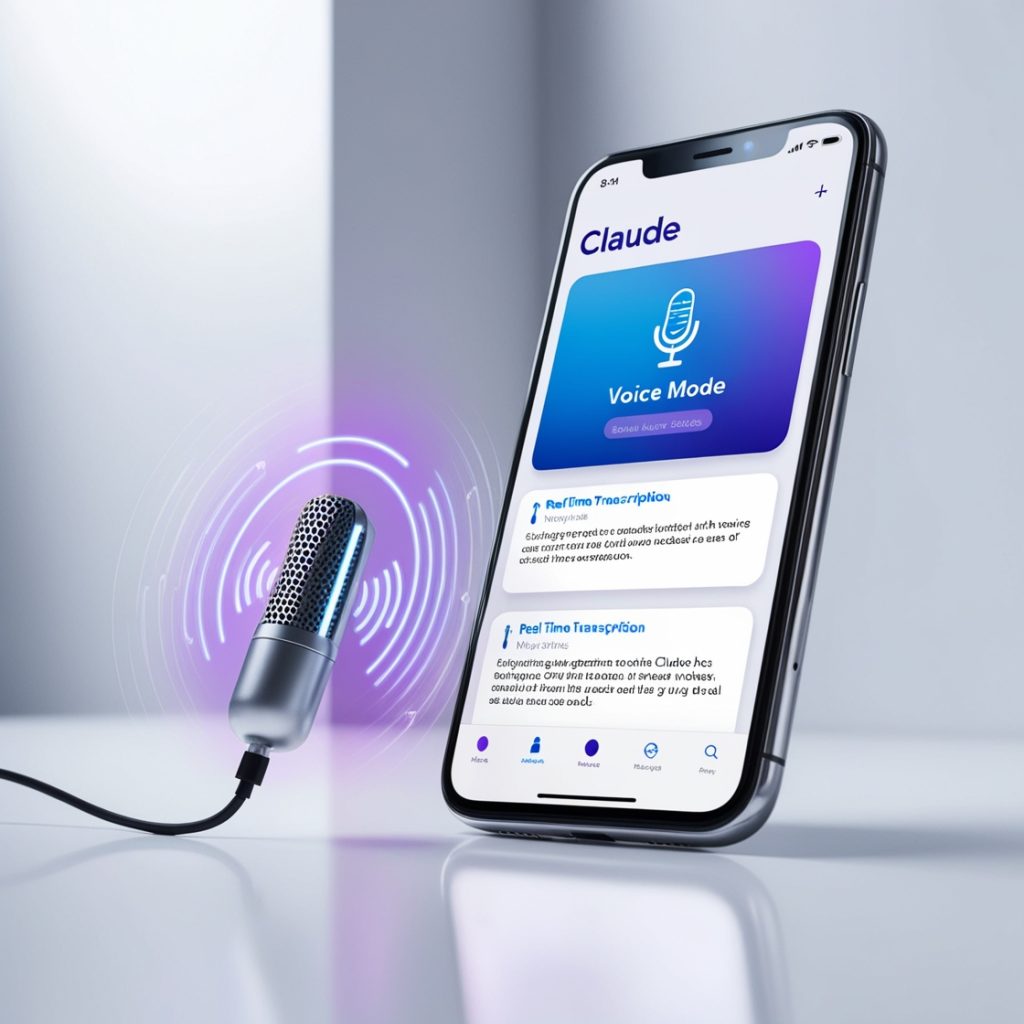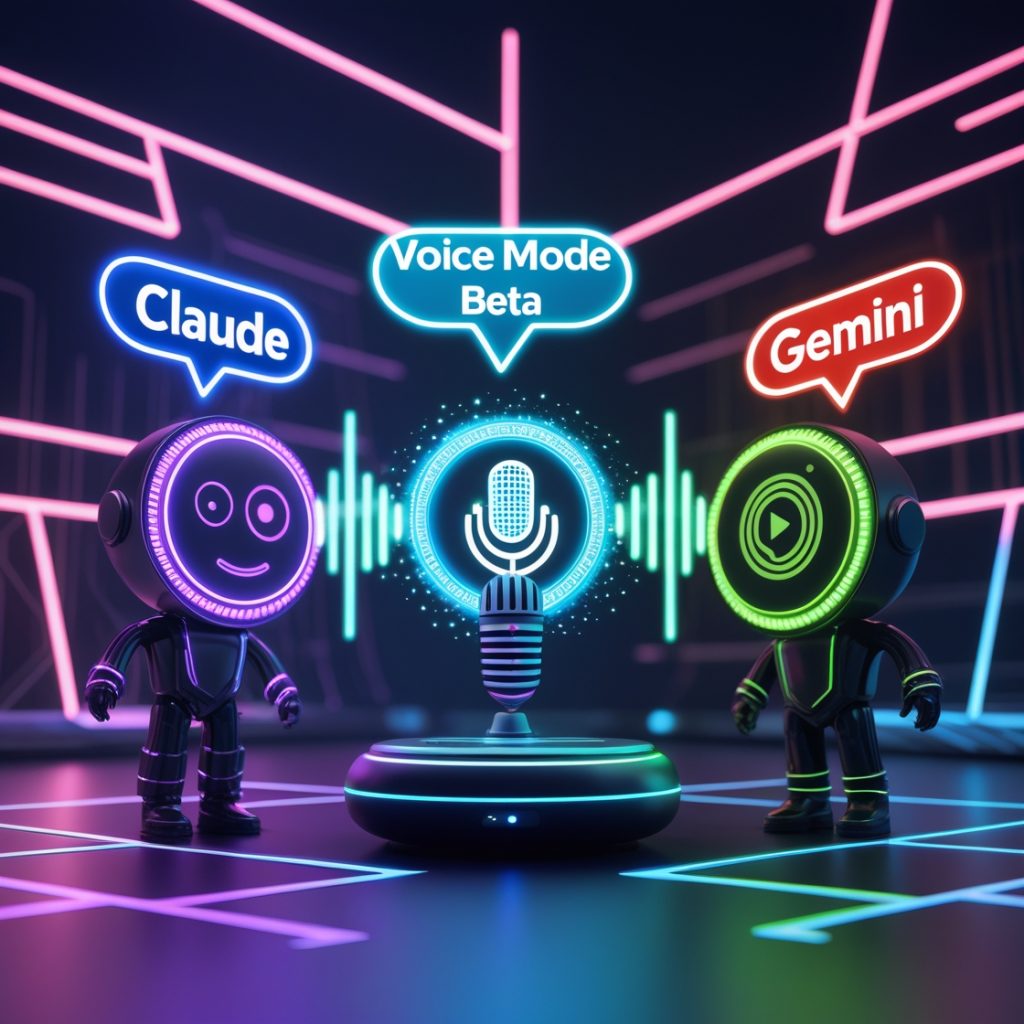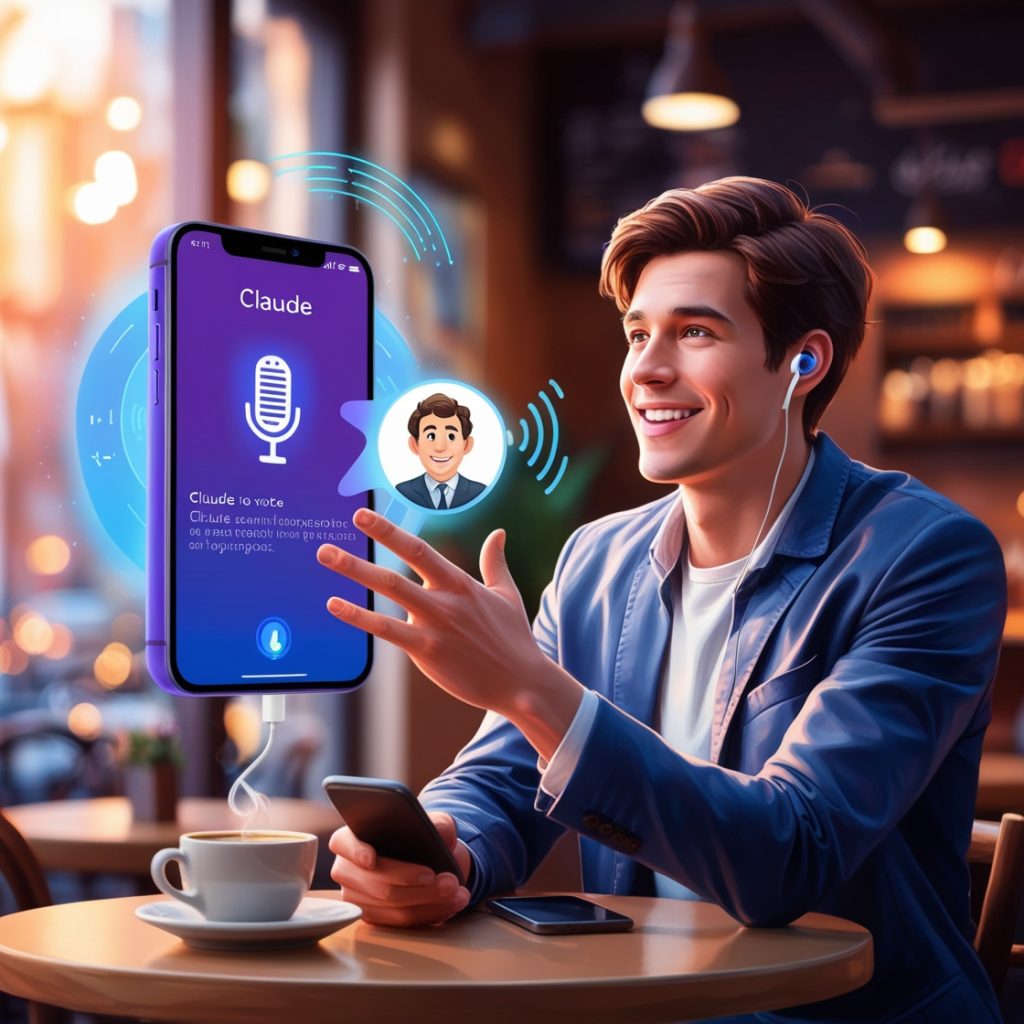Anthropic, the AI startup founded by former OpenAI researchers, has officially entered the voice assistant arena with the beta launch of a voice mode for its Claude chatbot, announced on May 28, 2025. This significant update, rolled out to mobile apps for iOS and Android, positions Claude as a direct competitor to established AI voice assistants like OpenAI’s ChatGPT, Google’s Gemini, and Meta’s offerings. With five distinct voice options and advanced conversational capabilities, Claude’s voice mode marks a pivotal step in Anthropic’s mission to create intuitive, human-like AI interactions, sparking widespread excitement and debate among tech enthusiasts and industry analysts. This development, coming just a week after Google’s AI Mode and Android XR smart glasses reveal at I/O 2025, underscores the intensifying race to dominate the conversational AI landscape.

A New Voice for Claude: Features and Functionality
The beta voice mode, powered by Anthropic’s Claude Sonnet 4 model, enables users to engage in “complete spoken conversations” with Claude, transforming it from a text-based chatbot into a versatile, hands-free assistant. Available initially in English, the feature allows users to interact via voice commands, with Claude responding in one of five distinct voice personalities, though only three were previously teased: Airy, Mellow, and a British-accented Buttery. The additional two voices remain undisclosed, adding an element of intrigue for early adopters. Users can switch between text and voice inputs seamlessly, with real-time transcriptions and summarized voice notes saved in the chat history, enhancing accessibility for tasks like brainstorming, learning, or managing daily activities.
A standout feature is Claude’s ability to display key points on-screen as it speaks, making it easier for users to follow complex responses. The voice mode also supports discussions about documents and images, allowing users to upload files via the mobile app’s camera, gallery, or file menu. For paid subscribers, integration with Google Workspace enables Claude to summarize Gmail emails or Google Calendar events, catering to enterprise users and professionals seeking efficient task management. However, free users are limited to 20–30 voice messages per session, while paid plans offer higher usage caps, reflecting Anthropic’s tiered approach to accessibility.
The Road to Voice: Anthropic’s Strategic Evolution
Anthropic’s documentation emphasizes optimal performance in quiet environments, advising users to speak clearly to maximize accuracy. The feature’s design prioritizes hands-free scenarios, such as driving or multitasking, aligning with industry trends toward natural, intuitive AI interactions. “Voice mode transforms how you interact with Claude by making it easier to use when your hands are busy but your mind isn’t,” Anthropic stated on its support page, highlighting its potential to enhance productivity and accessibility.
The launch follows months of anticipation, with Anthropic’s chief product officer, Mike Krieger, first hinting at voice capabilities in a March 2025 Financial Times interview. Krieger noted that voice was a “useful modality” for Claude, particularly for desktop interactions, and revealed ongoing discussions with partners like Amazon and voice-focused AI startup ElevenLabs to accelerate development. While no partnerships were finalized at the time, the rapid rollout by May suggests Anthropic’s internal prototypes were advanced enough to bring the feature to market independently.
Anthropic’s CEO, Dario Amodei, further fueled expectations in January 2025 at the World Economic Forum in Davos, announcing plans for a “two-way” voice mode alongside a memory feature to personalize user interactions. This strategic focus reflects Anthropic’s broader goal to keep pace with rivals like OpenAI, which introduced ChatGPT’s voice mode nearly a year earlier, and Google, whose Gemini Live supports voice interactions. The beta launch, announced via Anthropic’s official X account (@AnthropicAI), has already seen early access reported by at least one user, indicating a gradual rollout to ensure stability and gather feedback.

The voice mode’s debut coincides with other Claude enhancements, such as the “Research” feature, which enables web searches with citation-supported answers, and Google Workspace integrations. These updates position Claude as a multifaceted assistant, challenging ChatGPT’s dominance in consumer and enterprise markets. Anthropic’s $3.5 billion Series E funding round in March 2025, backed by Google and Amazon, has bolstered its ability to scale these features, despite reported financial losses last year. The company’s $61.5 billion valuation underscores investor confidence in its competitive potential.
The AI Voice Race: Context and Competition
Claude’s voice mode arrives amid a crowded and fiercely competitive AI voice assistant landscape. OpenAI’s ChatGPT has set a high bar with its Advanced Voice Mode, which includes live video interpretation despite occasional inaccuracies. Google’s Gemini Live, integrated into its Android XR smart glasses and AI Mode for Search, offers seamless voice-driven interactions, while Meta’s Ray-Ban smart glasses and Amazon’s Alexa+ leverage Anthropic’s Claude for enhanced functionality. Specialized firms like Sesame AI are pushing boundaries with hyper-realistic voices that mimic human nuances, raising the stakes for natural-sounding AI.
Anthropic’s entry is notable for its focus on enterprise-friendly features, such as Google Workspace integration, which appeals to professional users. However, its late entry—nearly a year after ChatGPT’s voice mode—has drawn criticism from some X users, who argue that Anthropic is playing catch-up. Posts on X reflect mixed sentiment: @rowancheung praised the real-time transcription and voice variety, while others, like a Reddit user on r/ClaudeAI, downplayed voice as a priority, citing Anthropic’s enterprise focus. This diversity of reactions highlights the challenge Anthropic faces in balancing consumer and business needs.
The broader AI voice race is driven by a growing expectation that assistants should not only type but speak, blurring the line between tool and companion. Anthropic’s choice of expressive voice names like Airy, Mellow, and Buttery aims to make Claude feel more human, a strategy echoed by competitors. For instance, OpenAI’s voice options and Google’s Gemini voices emphasize personality, while Hume AI’s integration of Claude with its EVI platform has demonstrated emotionally intelligent conversations, achieving over 2 million minutes of user interactions.

Ethical and Regulatory Implications
As voice mode enhances Claude’s accessibility, it also raises ethical questions about data privacy and AI safety. The ability to process voice inputs, documents, and images requires robust security to protect user data, especially with Google Workspace integrations. Anthropic’s commitment to responsible AI development, a cornerstone of its mission, is evident in its safety features, such as low hallucination rates and transparent sourcing in the Research feature. However, the memory feature, which allows Claude to recall past interactions, has sparked concerns about inaccurate recollections or data misuse, as noted in a gHacks Tech News report.
Policymakers are grappling with regulating voice-driven AI, with calls for international standards to prevent an “AI arms race.” Anthropic’s focus on transparency and user trust could influence industry norms, but the rapid pace of innovation demands ongoing dialogue with regulatory bodies. Public reactions on X, such as @tetumemo’s excitement and @the_hindu’s coverage, reflect enthusiasm for voice mode but also underscore the need for clarity on privacy measures.
Industry Impact and Future Prospects
Claude’s voice mode positions Anthropic as a serious contender in the AI assistant market, challenging OpenAI’s consumer dominance and Google’s hardware-integrated AI ecosystem. The beta launch, limited to English and mobile apps, is a cautious first step, with plans to expand to all subscription tiers in the coming weeks. The feature’s success will hinge on user feedback, particularly regarding voice quality, responsiveness, and integration with tools like Google Docs, which is exclusive to Claude Enterprise plans.
Analysts see Anthropic’s move as strategic, leveraging its partnerships with Amazon and Google to scale capabilities while maintaining a focus on enterprise users. The company’s collaboration with Hume AI, which uses Claude for emotionally intelligent voice interactions, suggests potential for niche applications in healthcare and customer service. However, Anthropic must address user interface concerns, as some X posts criticize Claude’s UI compared to ChatGPT’s polished desktop app and voice features.

Looking ahead, Anthropic’s planned “smarter” models and memory upgrades could further differentiate Claude, especially if voice mode expands to multilingual support or desktop platforms. The company’s ability to balance innovation with ethical considerations will be critical as it navigates a competitive landscape where realism, accessibility, and trust are paramount.
Anthropic’s beta voice mode for Claude, launched on May 28, 2025, marks a significant milestone in the AI voice race, bringing the chatbot closer to parity with ChatGPT and Gemini. With five voice options, real-time transcription, and Google Workspace integration, Claude offers a compelling alternative for hands-free, intuitive interactions. While the feature has generated buzz, as seen in posts from @TechCrunch and @AnthropicAI, it also faces scrutiny over privacy and Anthropic’s enterprise focus.

As the AI assistant market evolves, Claude’s voice mode is a bold step toward redefining how users engage with technology, setting the stage for a future where AI is not just a tool but a conversational partner.
CopyRights: Dhaka Ai



